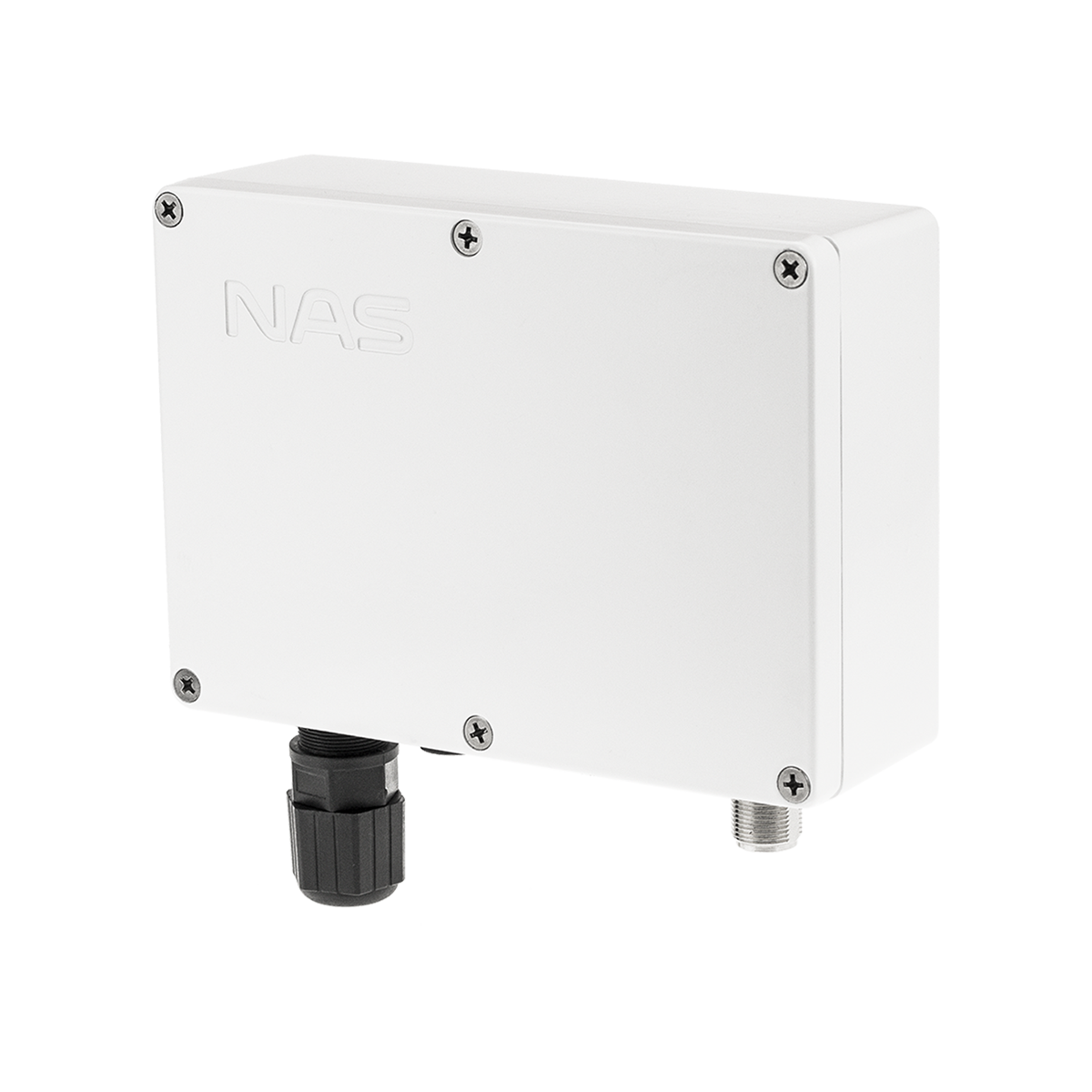
This page guides you to connect NASys LoRaWAN® Outdoor Gateway to The Things Stack.
NASys LoRaWAN Outdoor Gateway is an 8 Channel LoRaWAN gateway, whose technical specifications can be found in the official product page.
Prerequisites
- User account on The Things Stack with rights to create Gateways.
- NASys LoRaWAN Outdoor Gateway connected to the internet (or your local network) via ethernet.
Registration
Create a gateway by following the instructions for Adding Gateways. Typically, the EUI field for your gateway should exist on the sticker at the bottom. Make note of the Gateway ID you choose, because it will be needed later.
Configuration using a Terminal
Find the IP address the gateway. This can be done in various ways. You can connect your machine to the same local network as that of the gateway Ethernet connection and scan for open SSH ports or assign a static IP to the gateway and use that. Once the gateway IP address is found, ssh into it.
ssh root@<GatewayIP>
The default username is root, and the default password can be also found in the sticker.
Your gateway should come with a slightly modified version of the Lora-net UDP packet forwarder pre-installed at /opt/nas-lgw. There are two configuration files global_conf.json and local_conf.json, both located in /opt/nas_lgw.
The Gateway Configuration Server can be used to retrieve a proper global_conf.json configuration file for your gateway. Follow instructions here.
Update the configuration files on the gateway with your downloaded global_conf.json and restart the packet forwarder:
mv /opt/nas-lgw/local_conf.json /opt/nas-lgw/local_conf.json.old
cp global_conf.json /opt/nas-lgw/global_conf.json
systemctl restart nas-lgw
If your configuration was successful, your gateway will connect to The Things Stack after a couple of seconds.
Troubleshooting
If the gateway does not connect to The Things Stack after a few minutes, issue a reboot command, or disconnect and reconnect the power supply to power-cycle the gateway.
If you still have trouble connecting to The Things Stack, then try editing the gateway_conf section:
vi /opt/nas-lgw/global_conf.json
Edit the server parameters:
- gateway_ID: Make sure this is the same as the GatewayEUI (in lowercase).
- server_address: Address of your The Things Stack deployment. See Server Addresses.
- serv_port_up: UDP upstream port of the Gateway Server, typically 1700.
- serv_port_down: UDP downstream port of the Gateway Server, typically 1700.
You can access the gateway system logs using journalctl. See journalctl --help for details
journalctl -f -u nas_lgw -n 1000
The gateway logs will rotate when they reach about 15M in size, which means that you will generally not be able to access very old logs. At times of dense traffic (e.g. ~1000s of devices) this typically means that you will only have logs for 2-3 hours. If you want to keep historical data (for whatever reason), then you will have to forward the logs to an external server. If you decide to do so, then netcat may be useful:
journalctl -f | nc server-hostname server-port